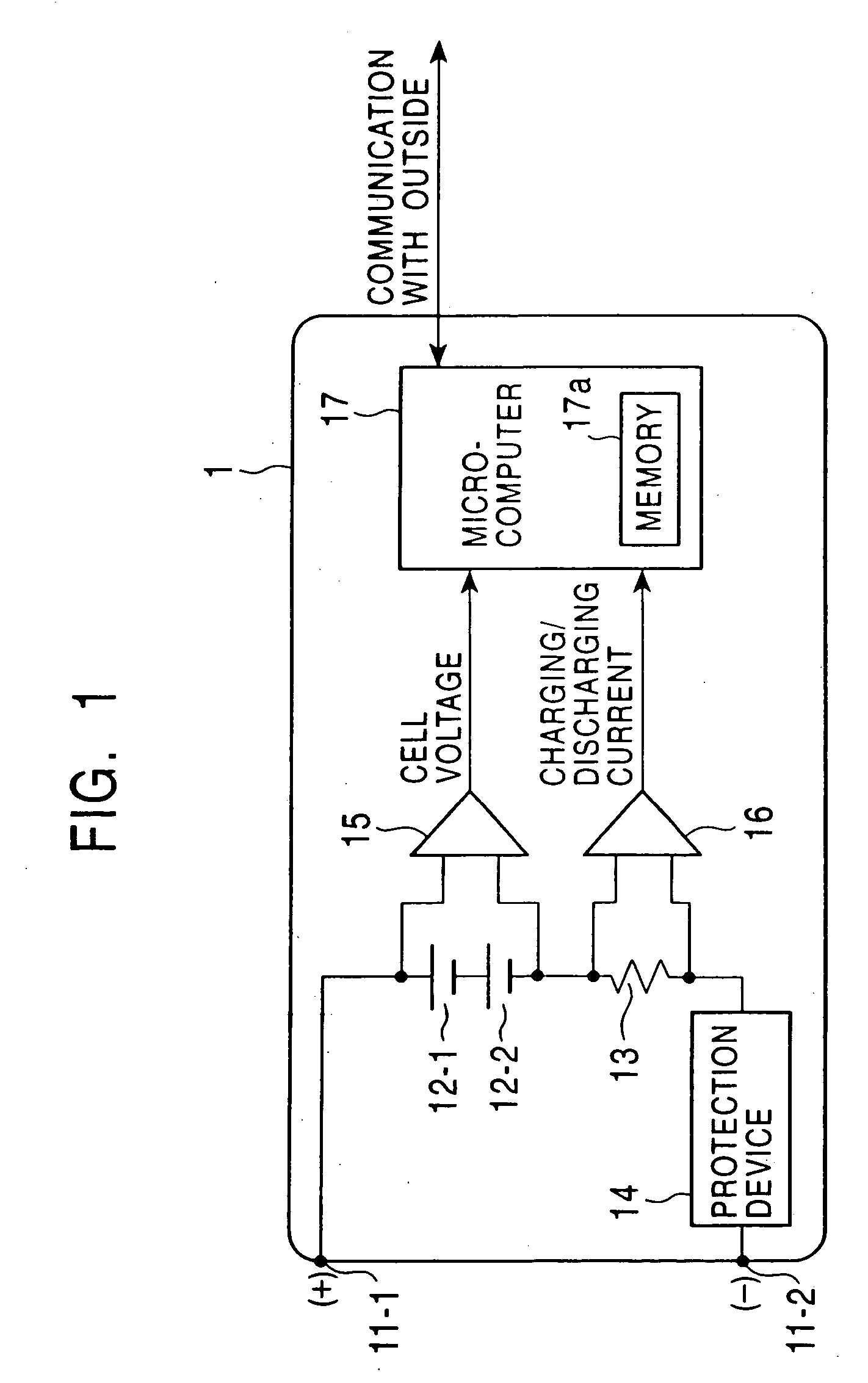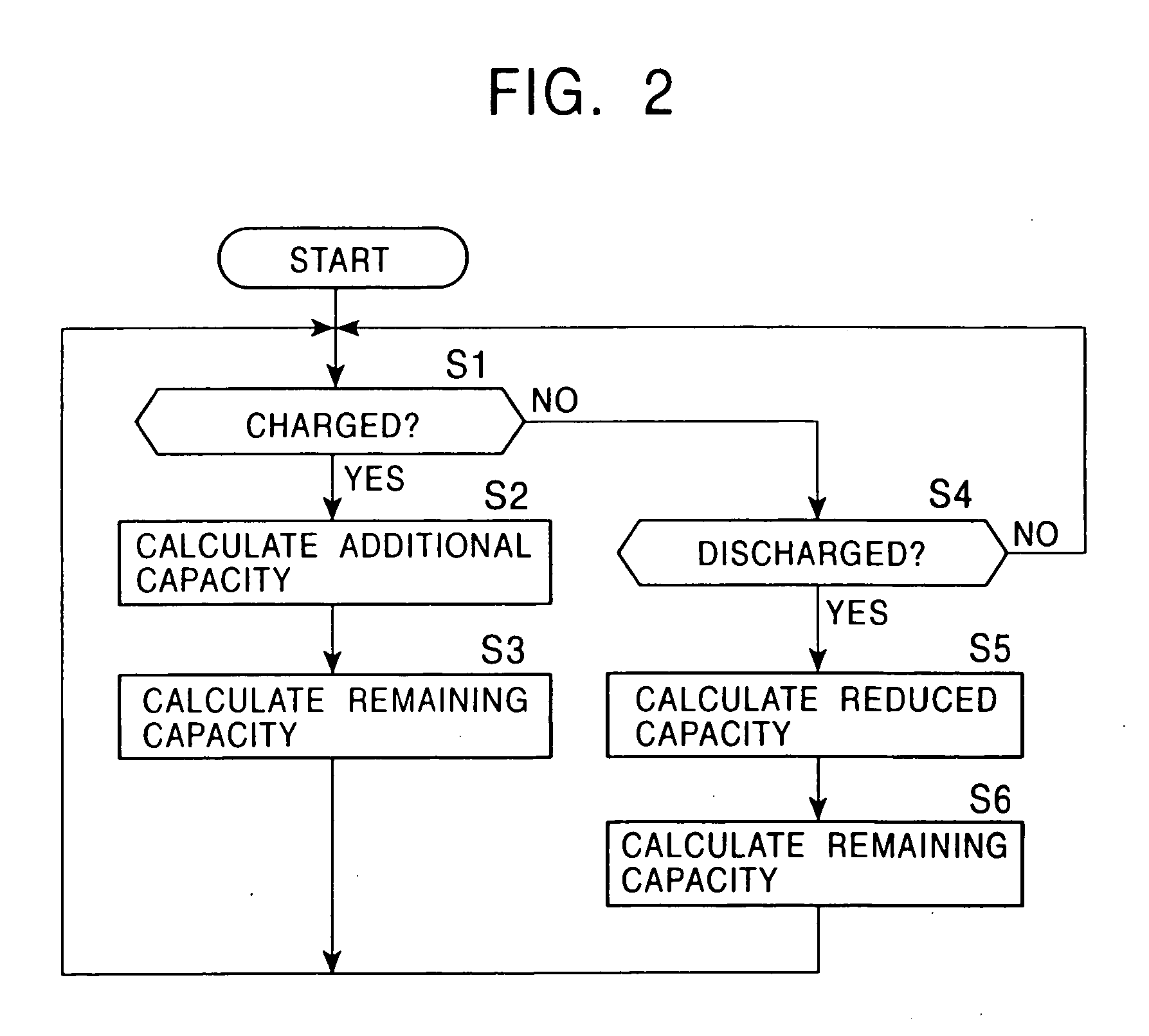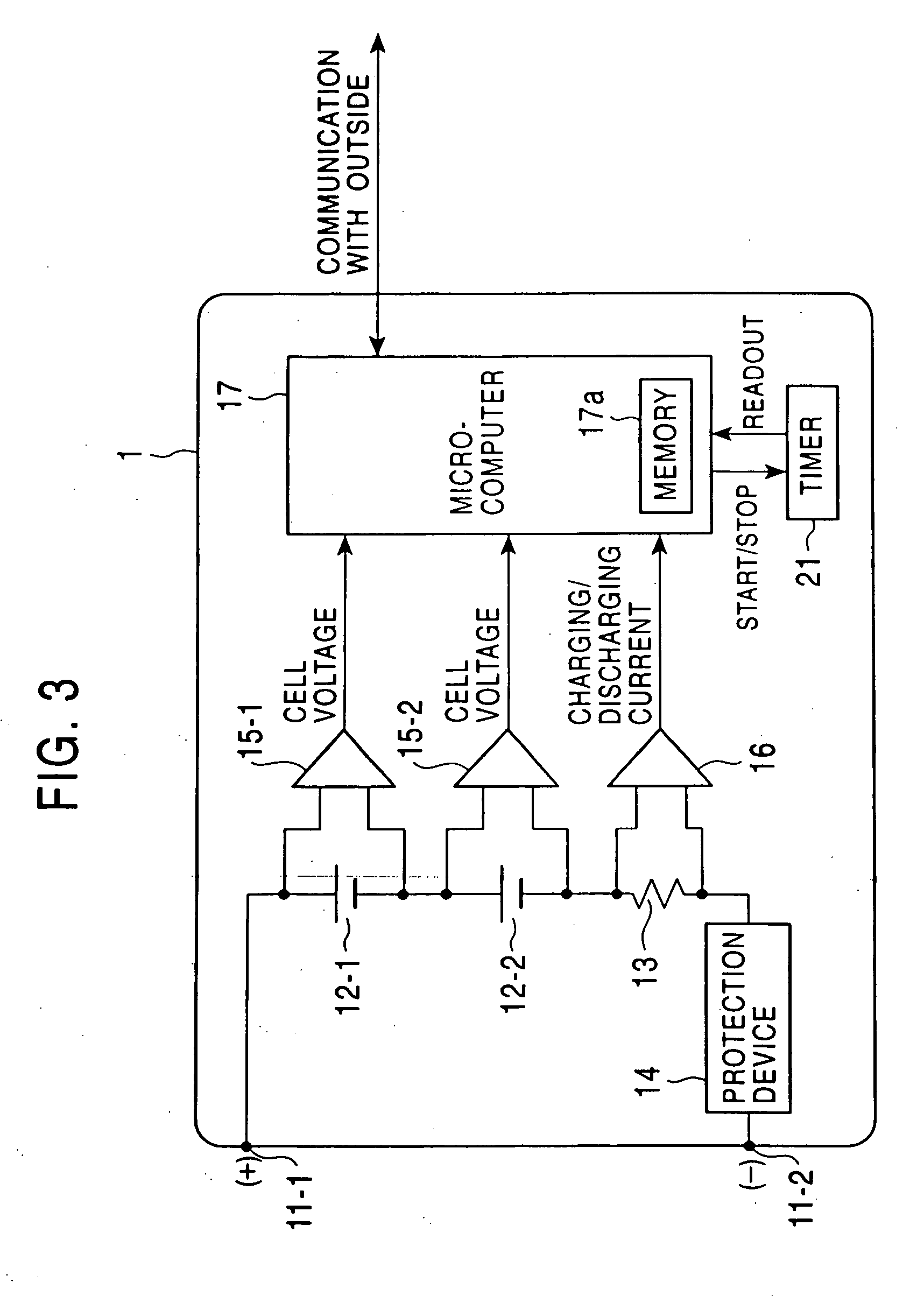Battery charging/discharging apparatus and battery charging/discharging method
a battery and discharging technology, applied in secondary cells, electrochemical generators, instruments, etc., can solve the problems of error between remaining capacity values and stored remaining capacity values, and achieve the effect of low cost and remaining battery capacity
- Summary
- Abstract
- Description
- Claims
- Application Information
AI Technical Summary
Benefits of technology
Problems solved by technology
Method used
Image
Examples
Embodiment Construction
[0035]FIG. 3 is a block diagram of a battery pack 1 according to one embodiment of the present invention. The same reference numerals are assigned to the parts corresponding to those in the conventional one shown in FIG. 1, and a description thereof is thus omitted as appropriate.
[0036] Referring to FIG. 3, the battery pack 1 includes cell voltage detectors 15-1 and 15-2 coupled to the cells 12-1 and 12-2, respectively, to detect cell voltages with higher accuracy, and further includes a timer 21. Other parts are constructed in the same manner as those in the conventional one shown in FIG. 1.
[0037] The cell voltage detector 15-1 detects the cell voltage of the cell 12-1, and outputs the detection result to the microcomputer 17. The cell voltage detector 15-2 detects the cell voltage of the cell 12-2, and outputs the detection result to the microcomputer 17.
[0038] The microcomputer 17 calculates the remaining battery capacity value based on the cell voltages supplied from the cell...
PUM
| Property | Measurement | Unit |
|---|---|---|
| self-discharge current | aaaaa | aaaaa |
| self-discharge current | aaaaa | aaaaa |
| standby time | aaaaa | aaaaa |
Abstract
Description
Claims
Application Information
 Login to View More
Login to View More - R&D
- Intellectual Property
- Life Sciences
- Materials
- Tech Scout
- Unparalleled Data Quality
- Higher Quality Content
- 60% Fewer Hallucinations
Browse by: Latest US Patents, China's latest patents, Technical Efficacy Thesaurus, Application Domain, Technology Topic, Popular Technical Reports.
© 2025 PatSnap. All rights reserved.Legal|Privacy policy|Modern Slavery Act Transparency Statement|Sitemap|About US| Contact US: help@patsnap.com



